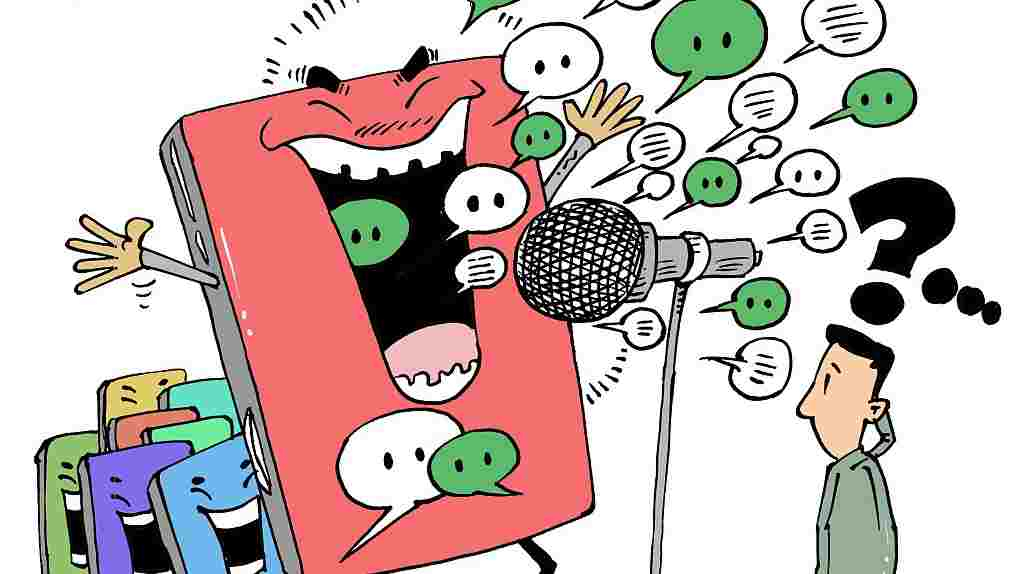
Domestic
09:22, 30-Mar-2019
How self-media chaos has sparked widespread outrage in China
Updated
09:33, 30-Mar-2019
Li Shuangyi

Last April, a Chinese "self-media publisher" based in Sydney released a story on WeChat with a sensationalist title, “The biggest scandal to hit Starbucks, drinking coffee is carcinogenic.”
The story was widely disseminated, with the claim that the carcinogenic effect was a secret that had been hidden for eight years.
It triggered discussions on the Chinese Internet and news sources including giant online portals, as official media outlets reported on the chemical known as acrylamide contained in brewed coffee.
This story, of course, was finally recognized as misinformation.
Coincidentally, the same self-media previously also published a fake story named “Great victory! Australia announced a cure for cancer! Australian medicine is indeed the savior of mankind!”
There are so many examples like these of false news and rumors that have run rampant on self-publishing platforms, which have grown in recent years in this technological era.
Why has self-media become a distribution center of false news?
Falsehoods travel faster and reach more people
Objectively, false news diffuses much faster than truthful news on social media.
A study by researchers at Massachusetts Institute of Technology found that falsehoods spread faster and deeper than the truth online, in all categories of information, by a substantial margin.

The Massachusetts Institute of Technology. /VCG Photo
The Massachusetts Institute of Technology. /VCG Photo
“Accurate stories rarely reached more than 1,000 people, yet the most prominent false news items routinely reached between 1,000 and 100,000 people. ... true stories take six times as long to reach 1,500 people as it does for false news to reach the same number of people,” researchers found.
Similar editorial process in an outward form
Self-media accounts could be divided into several categories, explained Fang Kecheng, a former journalist at Southern Weekend who is now a PhD candidate at the Annenberg School for Communication at the University of Pennsylvania. "One kind relays on various institutions as its background. There are other some self-media accounts giving priority to produce news as a tool in order to earn money,” Fang said.
Similar to traditional news outlets, “We need the chief editor who especially takes charge of the WeChat public account approval for a topic which selects mainly from Australian media supplemented by social hot affairs. We also have two chief editors to audit for stories to be published,” said a staffer at an overseas Chinese WeChat public account who asked not to be named.
When asked how they select topics for headlines, she gave an affirmative answer, “We are saturated with news, so things have to be more relevant to our target audience to get attention.”
She also said that as many self-media WeChat public accounts belong to commercial companies, they depend on high views to make money.
In addition to banner advertisements, other main sources of revenue for self-media come from “soft-sell advertisements.” Basically, these pieces look like normal stories, with opinions on current hot affairs. Then they start introducing a product at the very end of the story. The primary goal of self-media companies is to attract investment and advertisements like never before.
“Our owner cares more about clicks rather than stories,” she added.
Fang explained that although self-media run by individuals or small firms have the normal editorial process, this does not mean they have balanced reporting and journalistic professionalism, such as fact-checking.
“Clickbait titles can always attract higher viewership, which can be converted into advertising revenues and investment,” Fang added.
Curbing self-media chaos
Just like Facebook and Twitter, social media platforms such as WeChat and Weibo have become a primary news source in China, where anyone can set up an account and share their thoughts with a wider audience. Troublingly, not every individual is trained in journalism and has the awareness to check facts.

VCG Photo
VCG Photo
The development of self-media is a characteristic of our age. “Curbing self-media chaos is a global challenge, there is now a consensus that social media platforms ought to play a significant role in order to intervene and penalize self-media that spread misinformation. They have a responsibility to delete misinformation as well as demote them in the news feed," Fang said.
“Ultimately, if people's media literacy could be improved, they will be sensitive to misinformation with sensationalist titles. Eventually, they will disgust the fake news,” he said.

SITEMAP
Copyright © 2018 CGTN. Beijing ICP prepared NO.16065310-3
Copyright © 2018 CGTN. Beijing ICP prepared NO.16065310-3